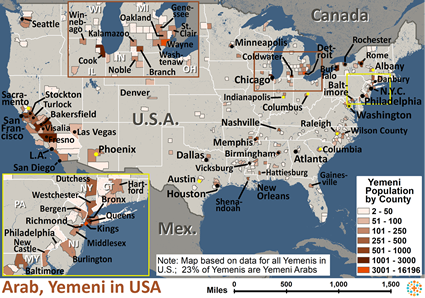The first Yemenis to settle in the United States did so between the 1870s and the 1890s. Some gained citizenship by fighting in WWI and WWII. One is most likely to find Yemeni Arabs in Detroit, Buffalo or California's Central Valley. Most Yemeni men work long hours to support their families. Yemeni Arab women in the United States raise children and maintain the home. Some American-born Yemeni daughters run away from home, seeking freedom from the traditional Yemeni lifestyle. Christ followers can be used by God to reach these hurting families, but few Americans are willing to reach the unreached in their midst.
Though they vary in terms of tribal loyalty, one thing Yemeni Arabs all agree on is devotion to the Islamic religious system. Therefore few, if any, have put their trust in Jesus Christ, no matter where they live.
Pray for the fragrance of Christ to heal Yemeni families in the United States.
Pray for a movement to Christ among them.
Pray for small, extended family home fellowships to multiply in the United States.
Pray for peace in Yemen that will allow the Yemeni diaspora to return home.
Pray for the Lord to use the instability in Yemen to help Muslim Yemenis understand their need for a righteous savior.
Scripture Prayers for the Arab, Yemeni in United States.
| Profile Source: Joshua Project |


























